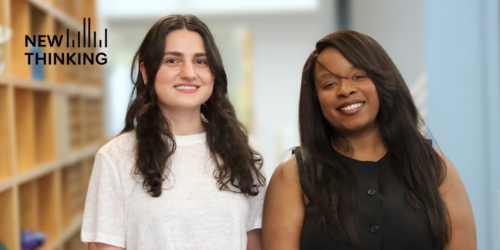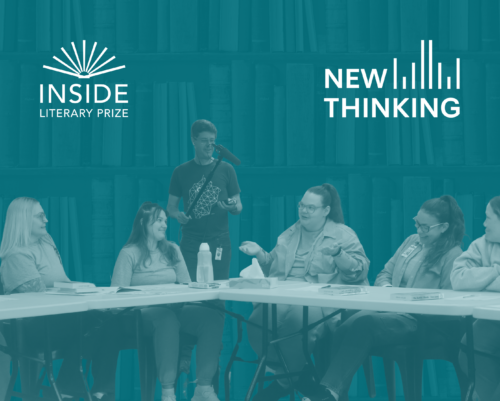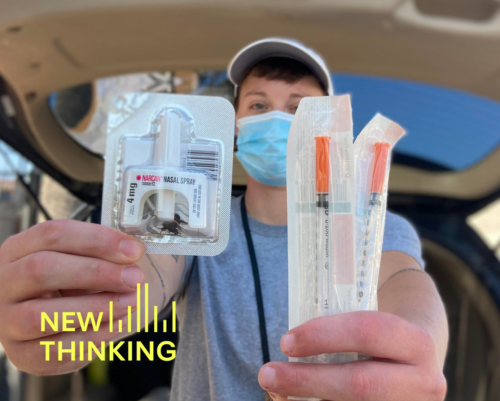Judge Matthew J. D’Emic presides over the Brooklyn Mental Health Court, which works with approximately 100 felony and misdemeanor defendants each year. D’Emic is a graduate of Fordham University and Brooklyn Law School. In June 2004, Carolyn Turgeon from the Center for Court Innovation sat down to talk with D’Emic about the court’s first two years.
What appealed to you about the Brooklyn Mental Health Court project?
In the mental health court, a person suffering from a mental illness—someone who would normally get caught up in the criminal justice system and stay there—could have another chance. Keeping these people in treatment and out of jail was a noble goal, and it appealed to me.
What problem is the Brooklyn Mental Health Court trying to solve?
There’s a significant percentage of defendants who come through the system and suffer from a serious persistent mental illness and don’t belong in jail. The traditional tools that judges have don’t really work with the mentally ill. The mental health court provides another option. We can do an evaluation of defendants, find out if they have a serious and persistent mental illness and, if they do, determine if they want to go into treatment. And both sides have to agree, so a defense lawyer and a D.A. have to agree that a particular defendant is eligible to participate in the court.
Describe a typical defendant.
Most of the people suffer from an “Axis I” diagnosis, which includes schizophrenia, bipolar disorder, schizoaffective disorder or major depression.
Cases come to us in several ways. When a defendant returns from a state mental hospital where they were examined for fitness to proceed to trial, they come to us automatically. And then we either take them or send them back to the part they originally came from. Also, court administration sent a memo to every judge advising them that the mental health court was available for referral. The defense bar disseminated the same kind of memo, as did the D.A.’s office. It helps that Brooklyn Defender Services and the Legal Aid Society both have a dedicated attorney in the part, and so does the D.A.
Initially we were set up to handle exclusively non-violent felonies, but that changed and we do take some violent felons with the consent of both prosecution and defense, as well as misdemeanor cases. We’ve had over 30 misdemeanor referrals.
You’ve been the presiding judge for two and a half years. What have you learned?
The first thing I learned was that this is an extremely complex problem, unlike drug addiction where there’s a therapeutic model of an 18-24 month residential treatment that seems to work. With mental health, because of the wide variety of illnesses—complicated by the lack of treatment facilities—treatment plans must vary. The court’s clinical team has found some innovative ways to keep people in treatment. Many clients suffer both from mental illness and drug addiction; they need to have both those problems addressed, and there are very few facilities that do that, so that’s one problem. And then of course we’d prefer not to take people out of the community if they can live at home, so we kind of wrap the services around them. We have close to 80 active participants, 46 of whom live by themselves or with family members, and another 23 who are in housing that provides services for people with mental illnesses. And close to another 30 are in residential drug treatment programs.
But the other thing I learned and learned very quickly is that engagement of each individual is very important. The bulk of the people who appear before me are people who have never been engaged in anything in their lives. And if the court shows them that their treatment is important and that their staying out of jail is important, then the universal human response is to engage back. And I think that works. I think through the court many defendants engage with society. It gives them some responsibility.
At this point we have had about 17 graduates. Tomorrow, one of our first referrals graduates. He’s a fabulous kid who is schizophrenic. He was hearing voices in his head, and was indicted for robbing two women. He was facing a long jail sentence on a very easy case to prove since the cops caught him in the act. He was in college when he suffered his first psychotic break and he’s been with us now for two years. His treatment plan originally called for a span of 12 to 18 months followed by misdemeanor probation because of the nature of his crime. His mother wrote a letter to D.A. Hynes and to the court, asking if she could have a dismissal. The D.A. agreed on the condition that he stay in treatment an extra six months. If he continued to do as well as he was doing, then the case would be dismissed. He did and tomorrow’s the day. He’s also back in college; he’ll be graduating soon.
Here is an example of a kid with some talent whose life could have gone nowhere, been a real waste. With the traditional approaches, what choices would a judge have? Take a plea, go to jail—he’d be a convicted felon and his illness would likely have gotten worse. But thanks to the mental health court, now he’ll have no criminal record, he’ll graduate from college.
You talk about the importance of getting people engaged. How do you do that?
Let’s face it, we’ve all seen people with mental illness on the street; you don’t really want to get to know them, right? So I’m dealing with people that nobody ever wanted to get to know, probably, or very few people. Here I am, an authority figure, and I try to demonstrate an interest in their lives. If they’re shy I’ll call them up to the bench as a means of making them feel more comfortable. But it’s not just me who bears the responsibility of connecting with defendants. I have a fabulous clinical team—our clinical director, three forensic case managers, a social worker—and they engage the individual as well.
How have your ideas about mental health changed?
I really had no prior experience with mental illness and thinking about it I began to recognize that this is really an underserved population, with no political constituency. We react with compassion towards physical illness but don’t bring that same understanding to mental illness. And I recognize that has to change. I am hopeful that society is beginning to recognize that we need to deal with the problem of mental illness in a much different way and I think that the court system has recognized that as well.
What about treatment?
It’s very complicated. Certainly it’s a life-long regimen of being on medication for a lot of defendants, and the new medications seem to work wonders. For example, one defendant suffering from delusions quickly decompensated and was initially deemed a poor candidate for the mental health court. After briefly being hospitalized, she has been returned to the court and is on a regimen of injections of a medicine called Prolixin that she receives every two weeks. And the difference in her is remarkable, so much so that a psychiatrist who consults for the court whom I respect greatly called her a poster child for Prolixin injection. She has so much insight now into her problem, these delusions she has suffered and it’s been going on for 20-odd years.
How do you balance a client’s needs with public safety concerns?
My job is to balance their needs against public safety and if they’re not doing what they’re supposed to be doing or if there’s the possibility of jeopardizing the public safety, then I have no choice but to act, and I’ve had to sentence about five or six people already. You know, they take a plea and that’s the price of admission to the court. I don’t have a hair trigger, obviously, in terms of imposing sentences, but I will if I have to.
Problem-solving courts often talk about graduated rewards and sanctions. Do you use rewards and sanctions differently in the mental health court now than you did two years ago?
When the court was first formed, we had a list of graduated rewards and sanctions. But mental health is too complicated to have any kind of a rigid structure. The list we have is good as a guideline, but if I put somebody in jail and they’re on medication, they might decompensate and then I’ve done more harm than good. So again, it’s based on the individual. I think the difference between a court like this and other problem-solving courts is that it’s so individual. Each personality, each illness, each treatment plan is different from the other.
How successful do you think the court has been?
Well, anecdotally I could tell you lots of stories, but I’d like to wait. We’ve had about 111 defendants accepted, and 17 have graduated and six have been terminated, and the other 76 that are currently in treatment seem to be doing fairly well. So based upon that, I think we’re doing all right. Public policy can’t be determined by anecdotes, so I’d like to see what the research shows.
What advice would you give to those who are interested in starting a mental health court?
I think you can start a court like this with little money. You get the community and mental health providers involved. You try to sign some psychiatrists on to do some evaluations for you. I think if you have a partnership of people and good will, meaning the defense, the D.A., the mental health community and the court, then you can set something up.
Any cautions?
It’s very labor-intensive. The judge has to be on top of it. You have to see these people every week, and make sure that nothing bad happens. Someone from the court has to be in touch with their programs—to make sure that they’re there, that they’re doing what they’re supposed to be doing, that they’re taking their medications. Again, public safety is a huge part of this. The mental health court is labor-intensive, and the focus is to keep people in treatment and out of jail. These are people who are out in the community and you have to make sure that everybody’s safe. It just takes time and effort.


